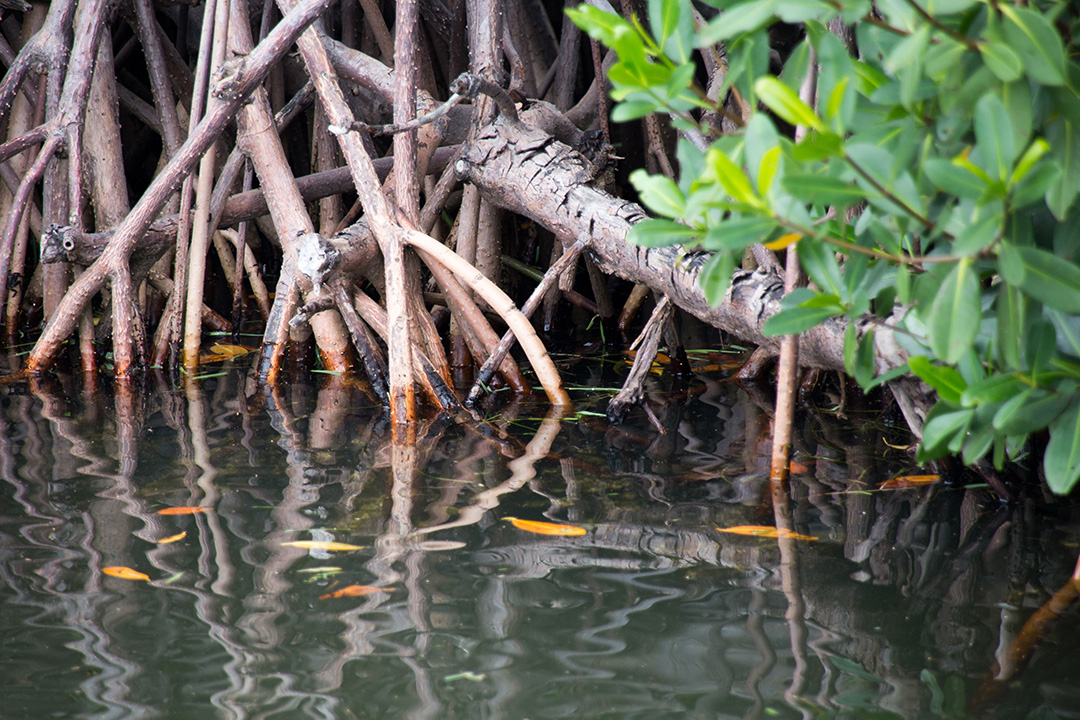Good Morals, Good Marketing: The business case for taking climate action
The family-run Falcon Trails resort in Manitoba is taking its climate action to the next level.
Today, IISD and the Manitoba Chambers of Commerce launched a new resource, the Climate Action Toolkit for Manitoba Business. During the research phase, we spoke with many leaders from the local business community who had already taken steps to reduce their carbon footprint; one of them was Caleigh Christie, whose family manages a resort called Falcon Trails. This is her story about taking sustainability to the next level.
At the corner of Falcon Lake in Manitoba’s Whiteshell Provincial Park, a 90-minute drive from downtown Winnipeg and just stone’s throw from the Ontario border, you’ll find a swimming dock, a small ski hill and a smattering of hand-built cabins. This is Falcon Trails Resort, one of the most climate-friendly places you can stay in the region, especially if you choose their off-grid accommodation.
The environment hasn’t always been front and centre of the Falcon Trails business model—initially, when Craig Christie and Barb Hamilton purchased the site with a few other partners in 1996, their motivation was simply to ensure the ski hill was protected. (The provincial government had owned and maintained it since 1959; there were plans to shut it down in the mid-‘90s, but at the last minute, an agreement was made to sell it privately to members of the local community.)
The husband-and-wife team ran a construction business in the area and were outdoor enthusiasts, so they set out from the beginning to build a modest resort that would have as little impact on the surrounding environment as possible, allowing guests to enjoy nature without harming it.
"We just started to recognize that our environmental efforts could be used as a competitive marketing advantage.”
“Those first 10 years were just about building the cabins, figuring out how to run a ski hill and a resort,” says Caleigh Christie, the couple’s daughter, who is now General Manager, Indoor Operations, for Falcon Trails. “But then the other partners decided to leave, giving our family full control of the business.
And this is when the real climate action began...
“Around that time, my sister brought in eco-friendly cleaning products for our staff to use and we were putting the finishing touches on our off-the-grid cabins, and we just started to recognize that our environmental efforts could be used as a competitive marketing advantage.”

Initially, says Christie, the family had promoted Falcon Trails’ off-the-grid accommodations simply as “outpost cabins,” but they decided to rebrand them as “eco cabins” after noticing a growing demand for eco-tourism in the travel sector. They also applied for—and won—numerous awards from Travel Manitoba, which gave a further boost to their public reputation.
A moral decision and a competitive marketing decision...
“In the end, our efforts became a moral decision as well as a competitive marketing decision,” says Christie. “Since then, we’ve continued to push the needle on what we can achieve.”
In terms of the infrastructure at Falcon Trails, the Christie-Hamilton family has taken advantage of rebate programs with Manitoba Hydro to install solar panels, along with various incentives to improve energy efficiency through upgrades to insulation and LED lighting retrofits.
It hasn’t all been smooth sailing. As is the case when most businesses start on their journey to take climate action, there are occasional hiccups. Christie recalls that, when they first swapped their conventional cleaning products for eco-friendly brands, there was resistance from staff who felt the new products weren’t as effective. It took some trial and error to find a solution that worked for everyone.

Now, though, the only challenge is finding new ways for Falcon Trails to step up its game. Something they’ve been trying recently, says Christie, is coming up with projects that not only reduce their footprint but simultaneously engage the local community. They’ve just launched a new Environmentalist-in-Residence program, for instance, which allows guests to stay at the resort during the offseason, at no cost, in exchange for a service that makes the resort even more eco-friendly.
“We have an experienced seamstress coming as part of this,” says Christie, “and she restores textiles, so she’s going to look at ways we can repurpose our old bedsheets and towels. She’ll also do some mending of the hockey bags we use to haul laundry from cabin to cabin and fix some uniforms.”
They’ve just launched a new Environmentalist-in-Residence program, for instance, which allows guests to stay at the resort during the off season, at no cost, in exchange for a service that makes the resort even more eco-friendly.
It goes without saying that the staff at Falcon Trails are fully on board with putting climate action at the centre of how they do business. This won’t be changing anytime soon, but Christie does have some advice for those who are looking to make similar efforts in their own operations.
“You have to go into this knowing that becoming an eco-friendly business won’t happen overnight, but it needs to start happening now—the sooner, the better.”






